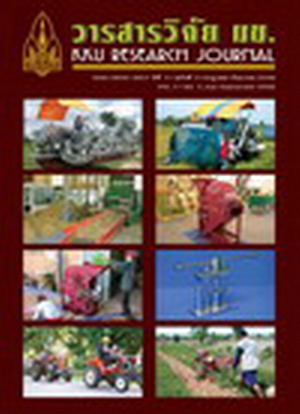Survival of Frozen Bovine Embryos Cryopreserved by Vitrified Solution(Thai)
Main Article Content
Abstract
Bovine embryo freezing is significantly important to the bovine industry for dissemination of qualified breeds. The easiest method, called vitrification, is the use of the high concentration solution of cryoprotectants. Twelve cows were stimulated with single injections of pregnant mare serum gonadotropin (PMSG) at a dose of 2,500 iu/cow. One cow did not respond to the hormone and six other cows were found to develop cystic ovary after the treatment. Three qualified (two blastocysts and one expanded blastocyst) plus two degenerated embryos were recovered from four cows. Embryos were cryopreserved by the vitrification technique. The vitrification solution was prepared with 25 % v/v dimethyl sulfoxide (DMSO) + 25 % v/v ethylene glycol + 20 % fetal calf serum in phosphate buffer saline solution (PBS). After 24 hours storage in liquid nitrogen, embryos were thawed at 20 °C for 15 min, then incubated in 0.5 M sucrose + 20 % fetal calf serum in PBS for 5 min and finally washed in PBS + 20 % fetal calf serum three times. Embryos were cultured under 5 % CO2 in air at 39 °C for further viability assessment. None of the embryos demonstrated any sign of development after being cultured for 24 hours. From this research, it can be concluded that the production of bovine embryos by vitrification using EG and DMSO is unable to afford survival of embryos after thaw.


